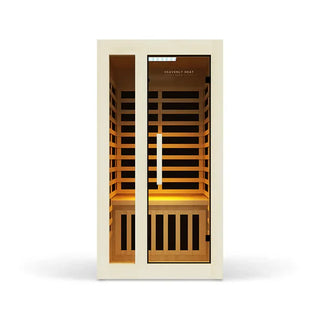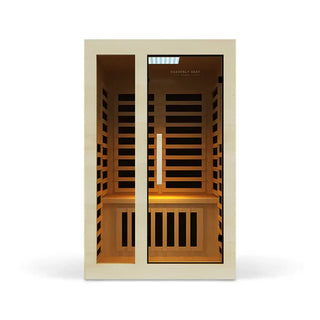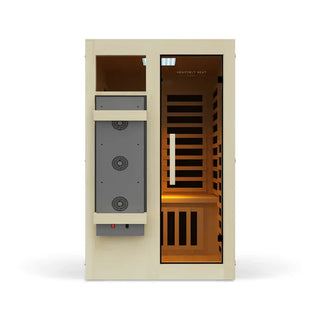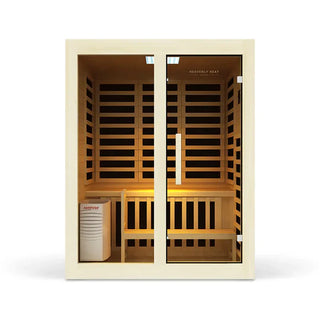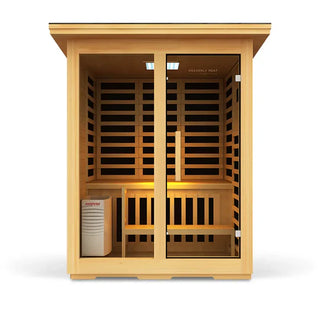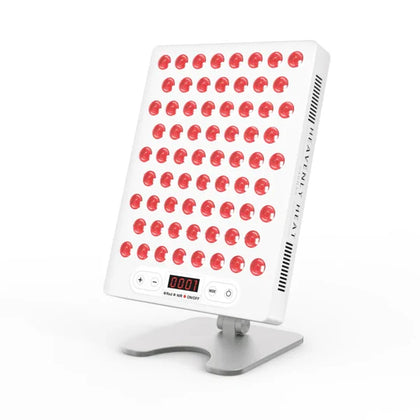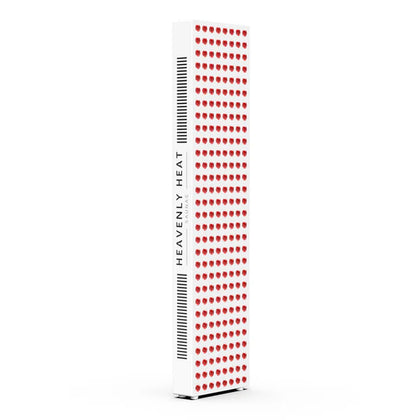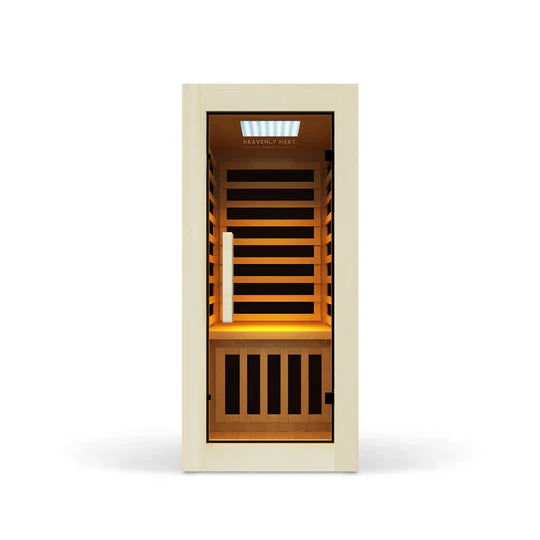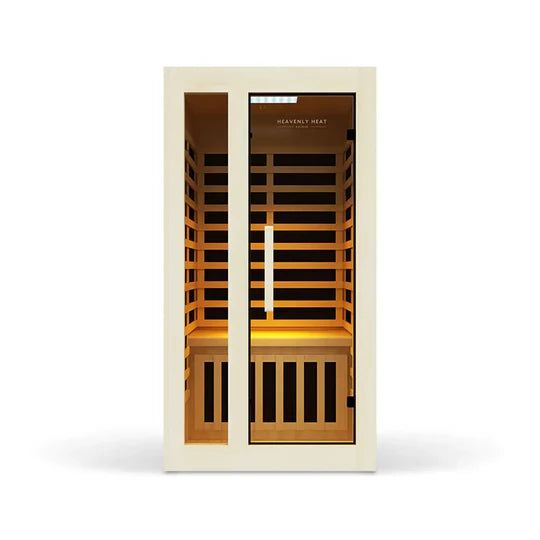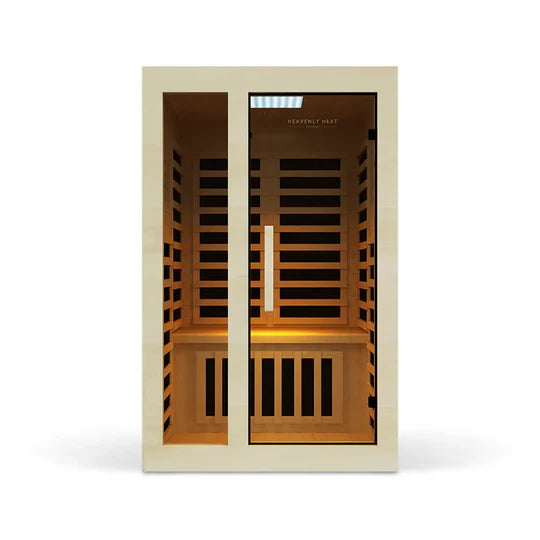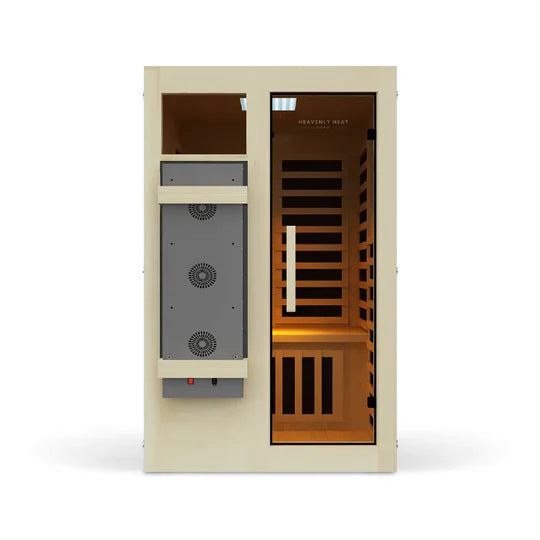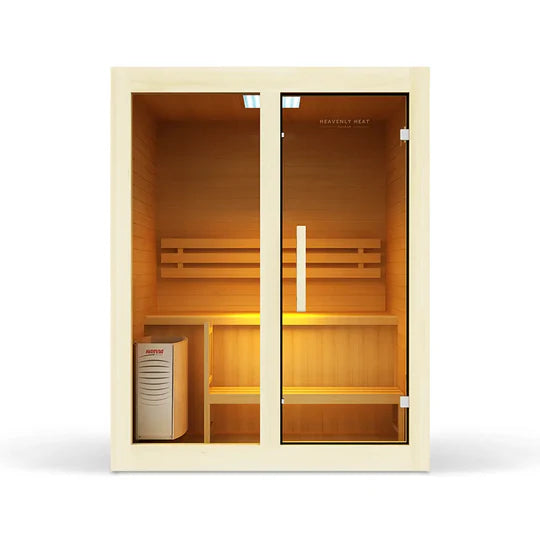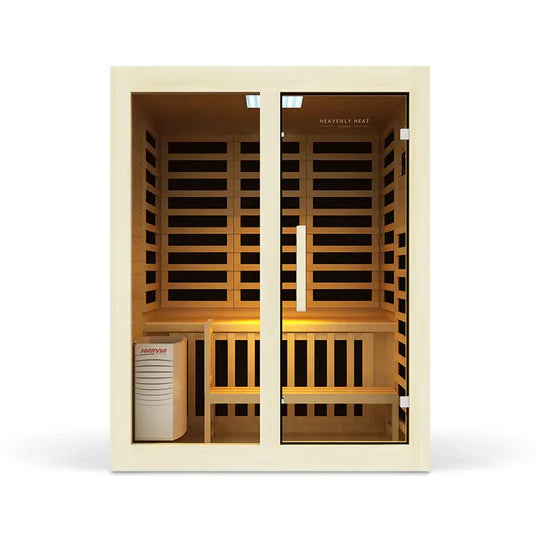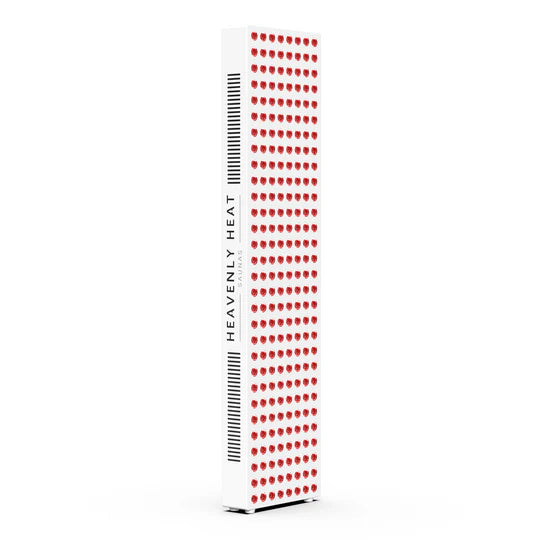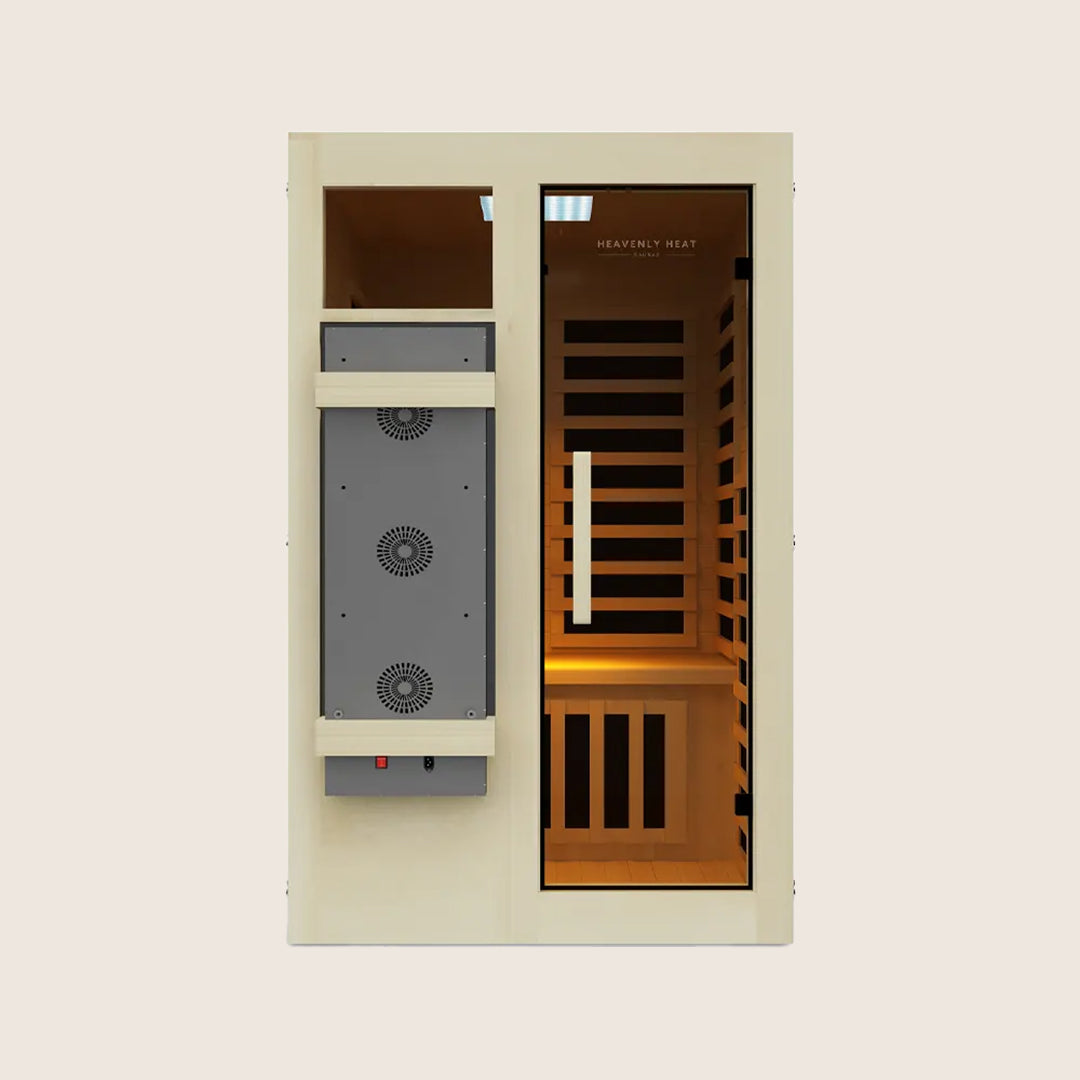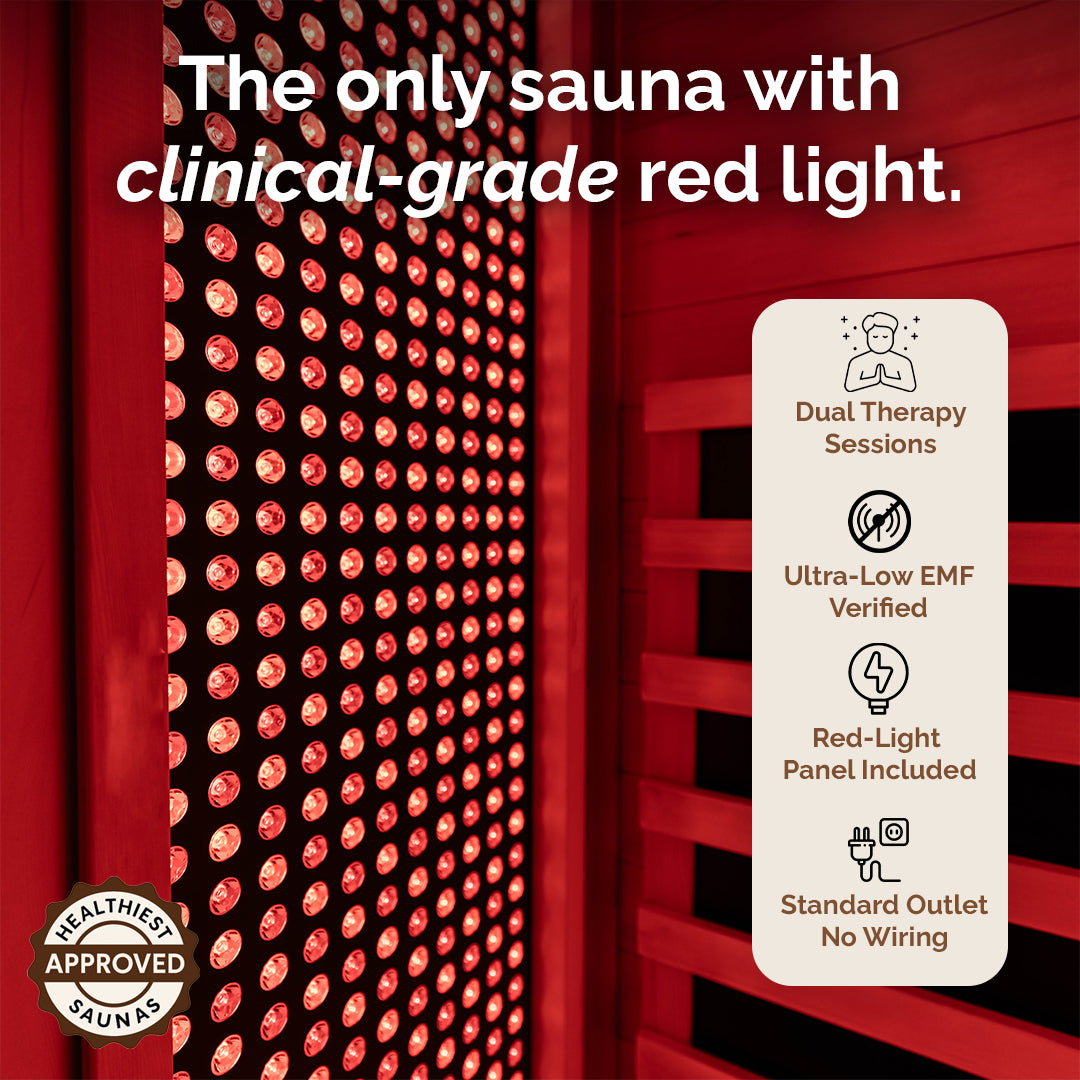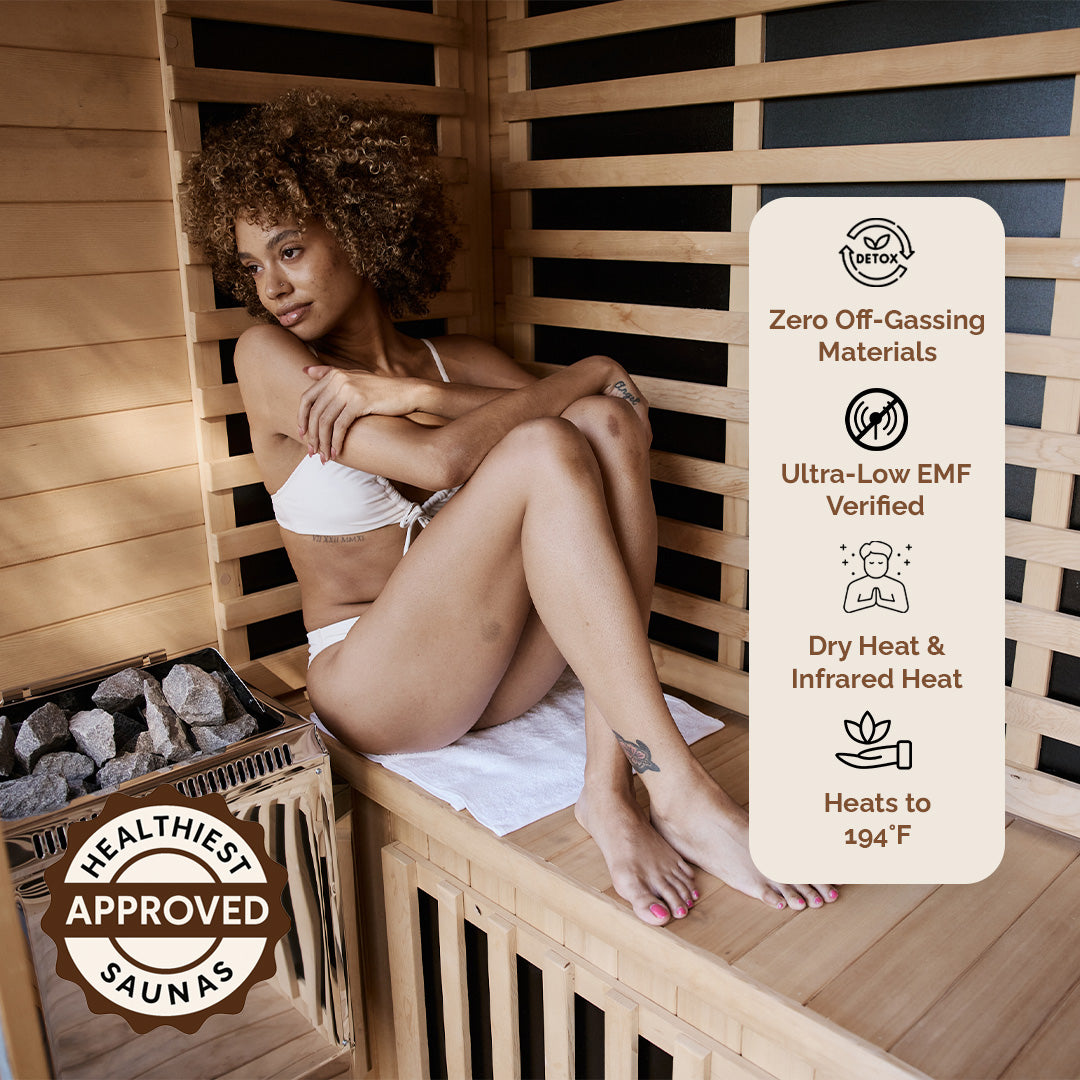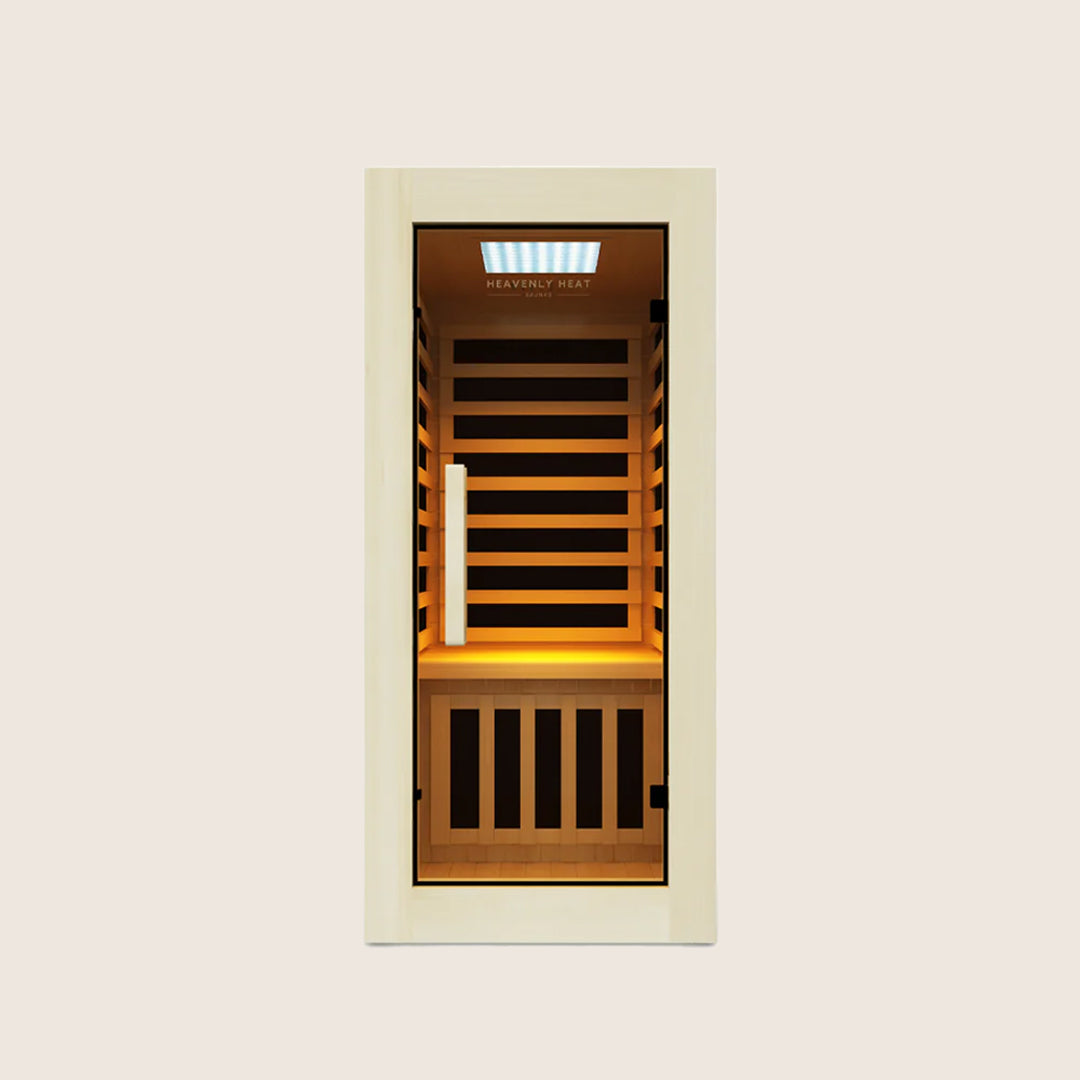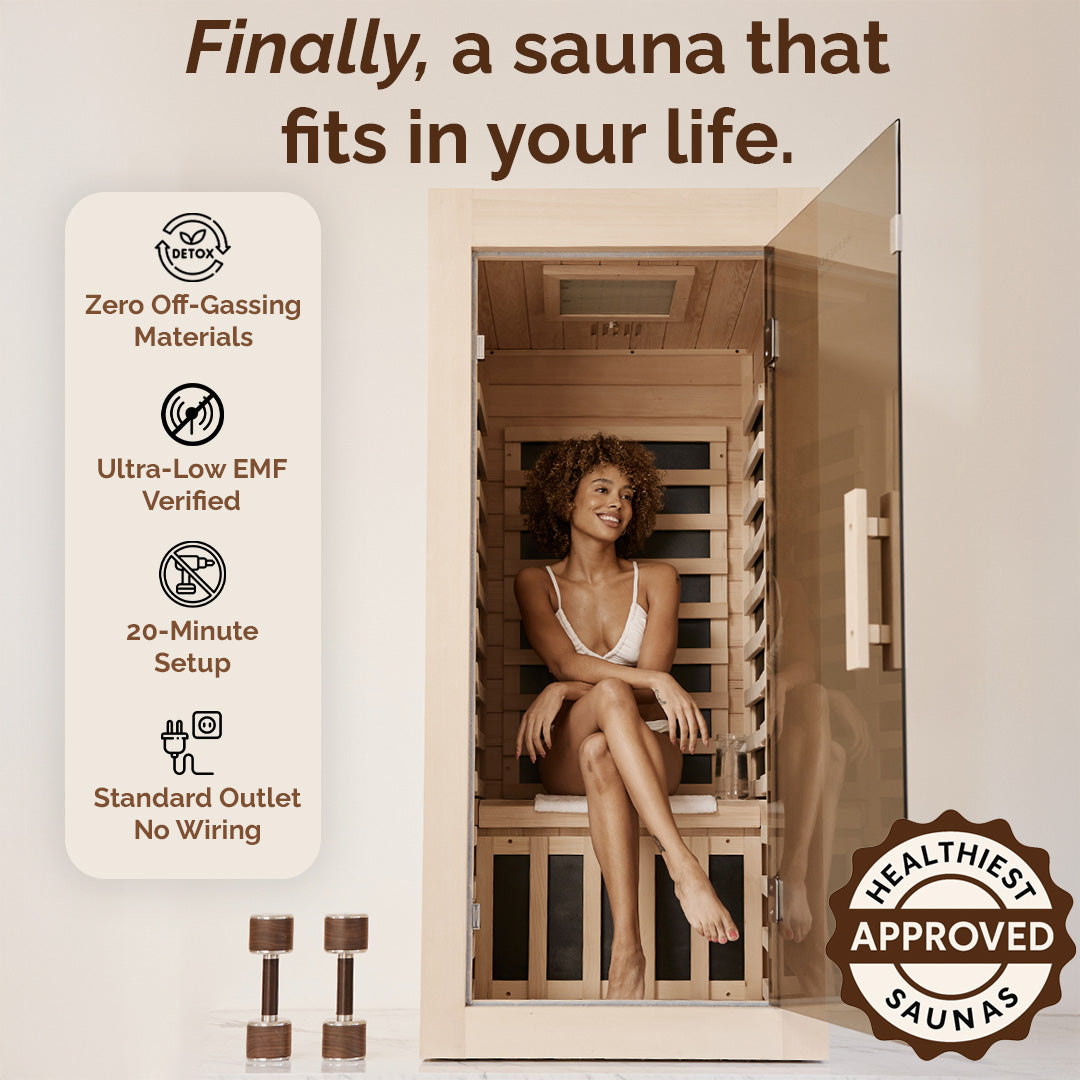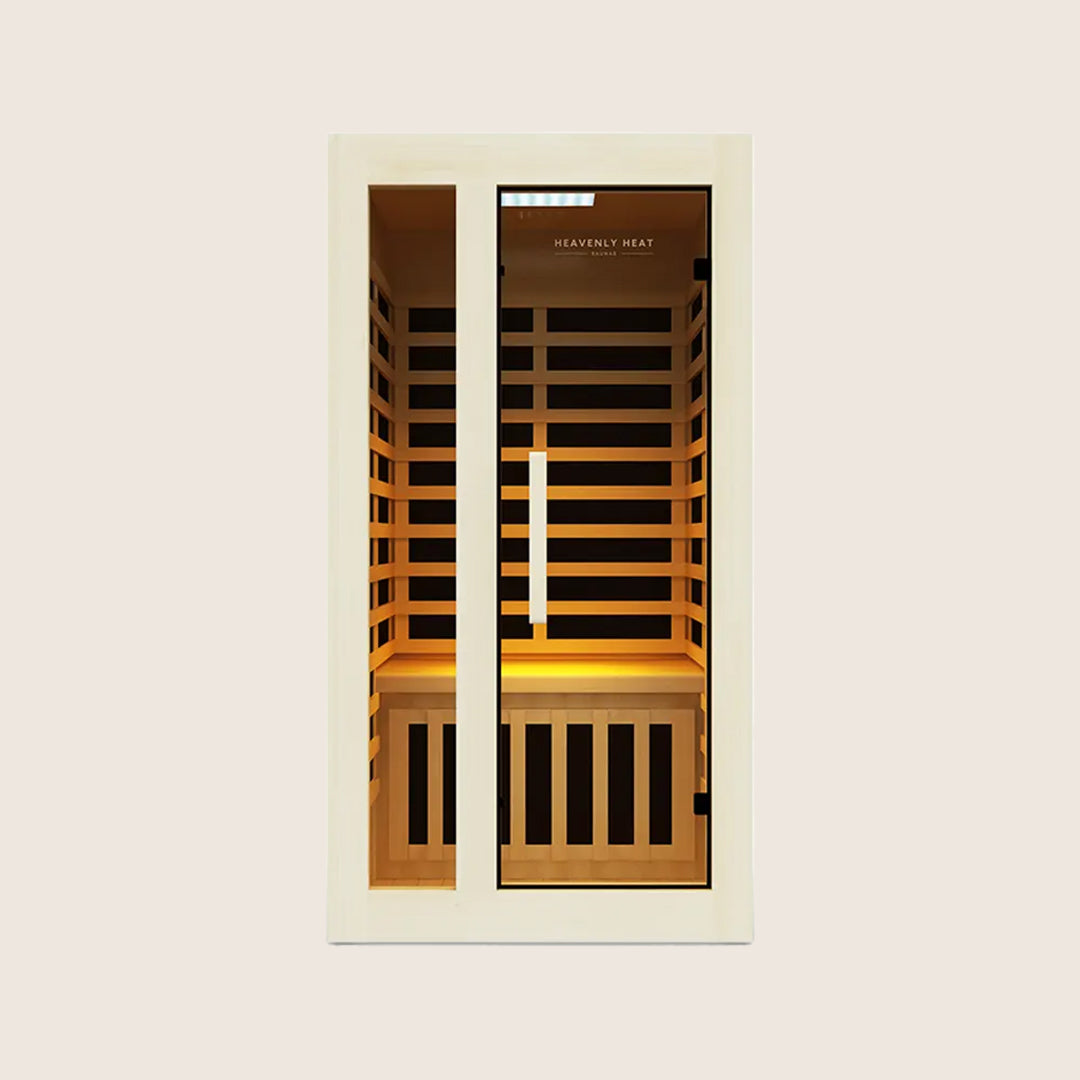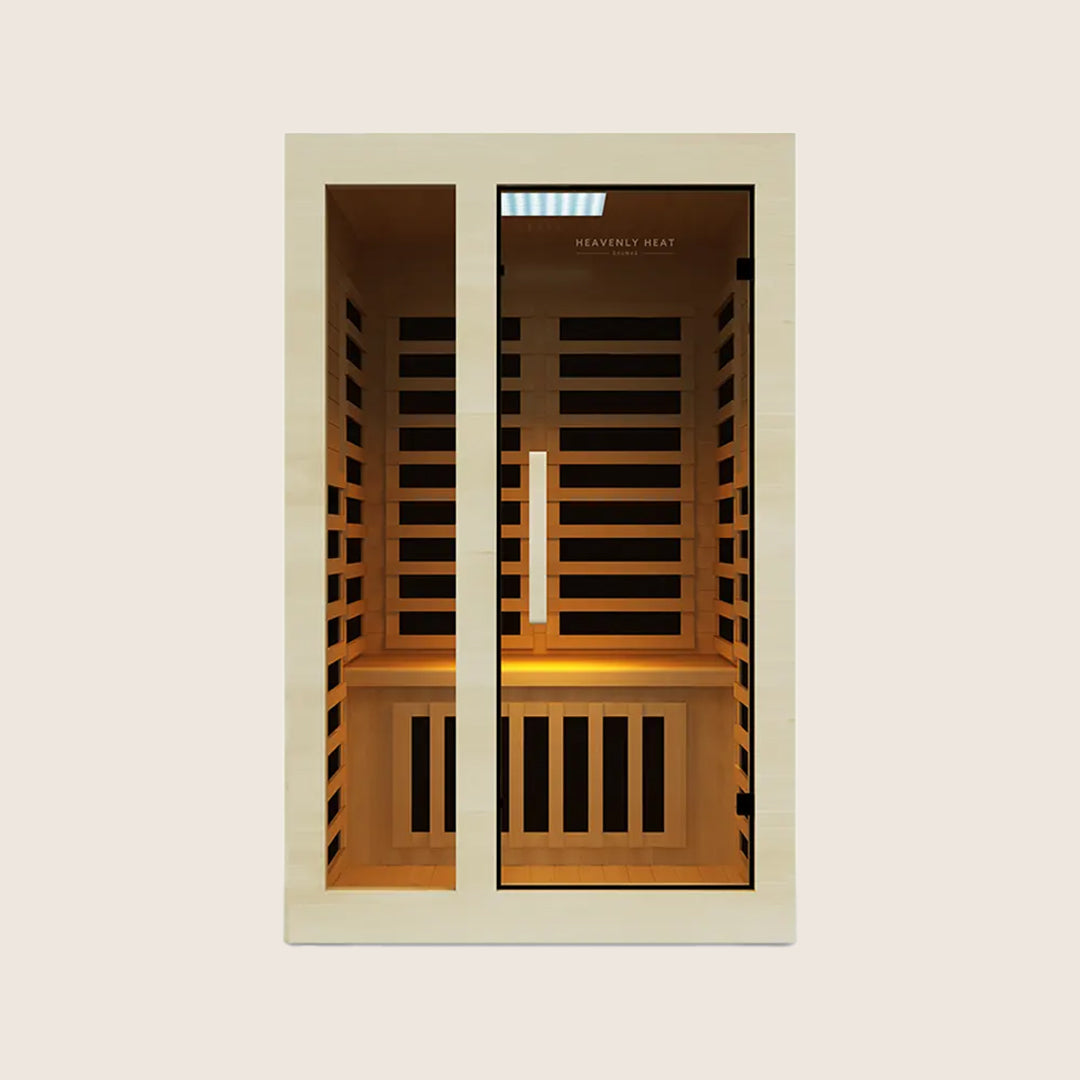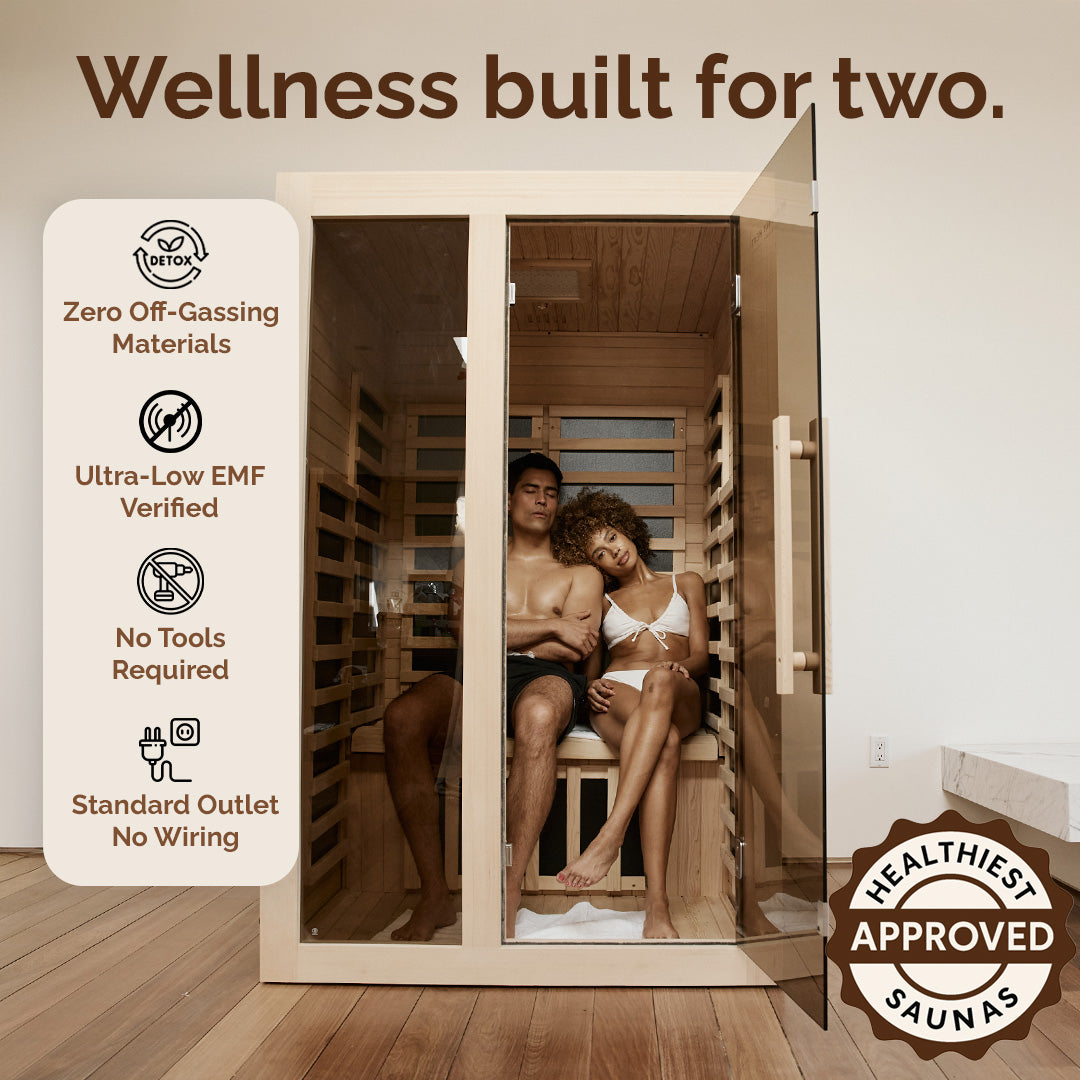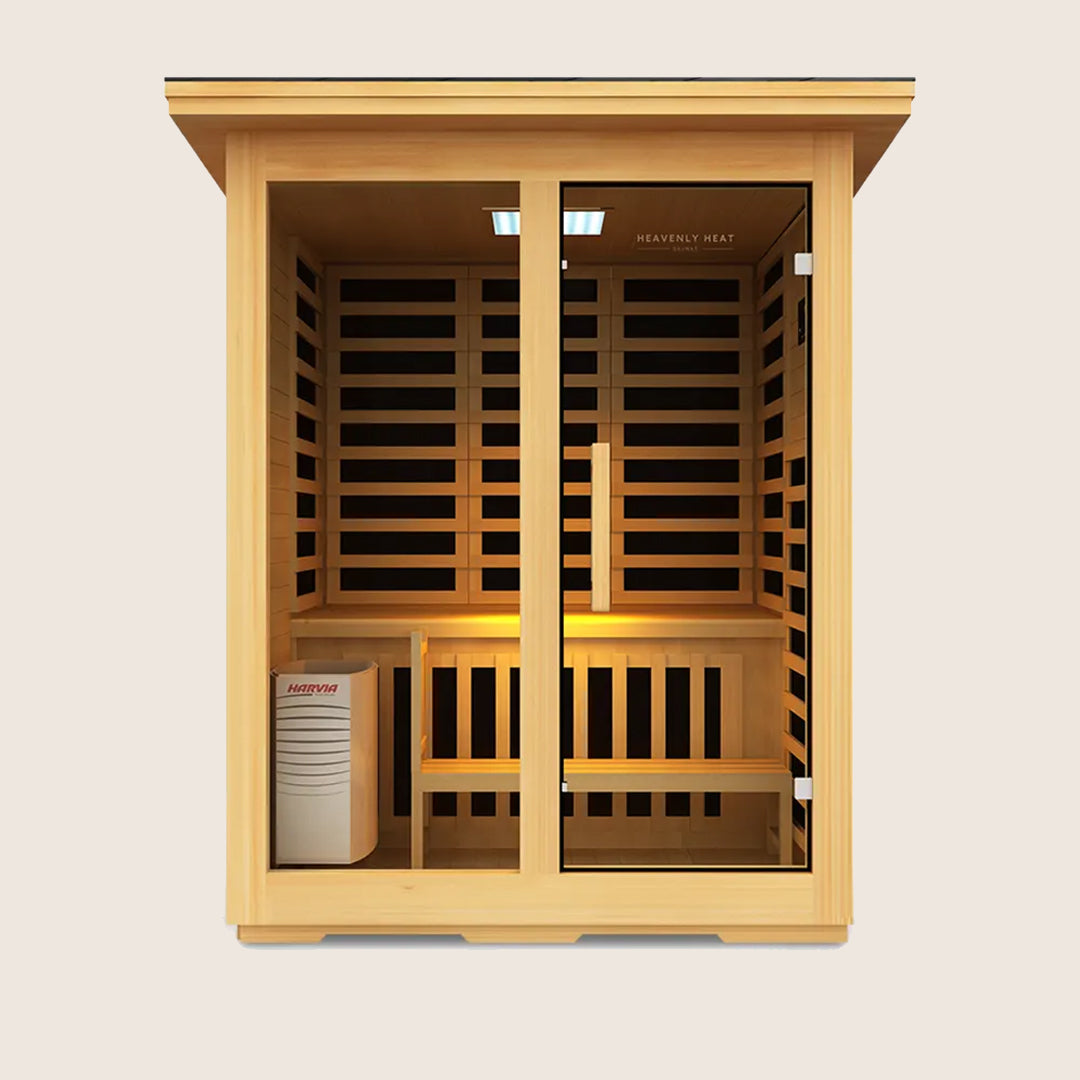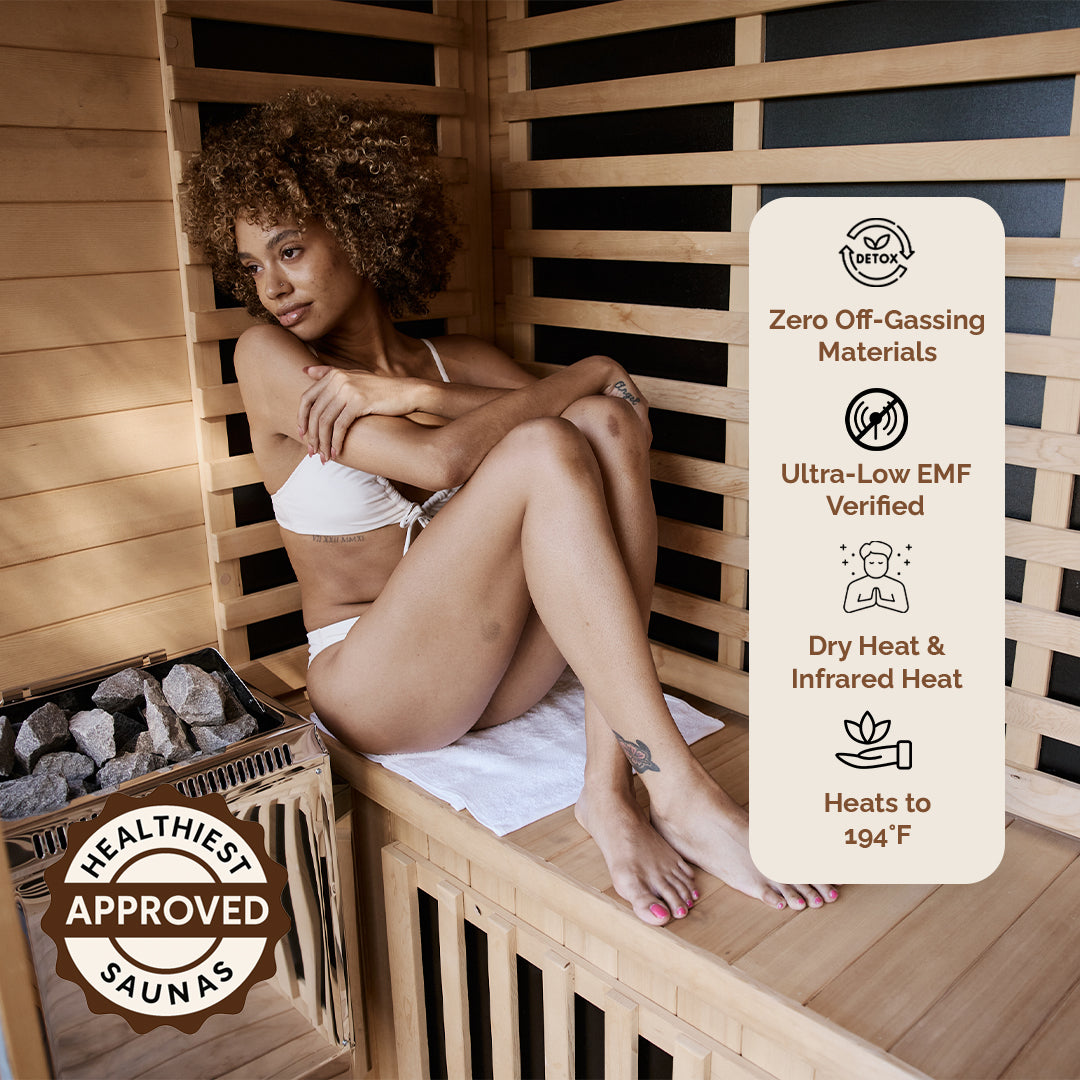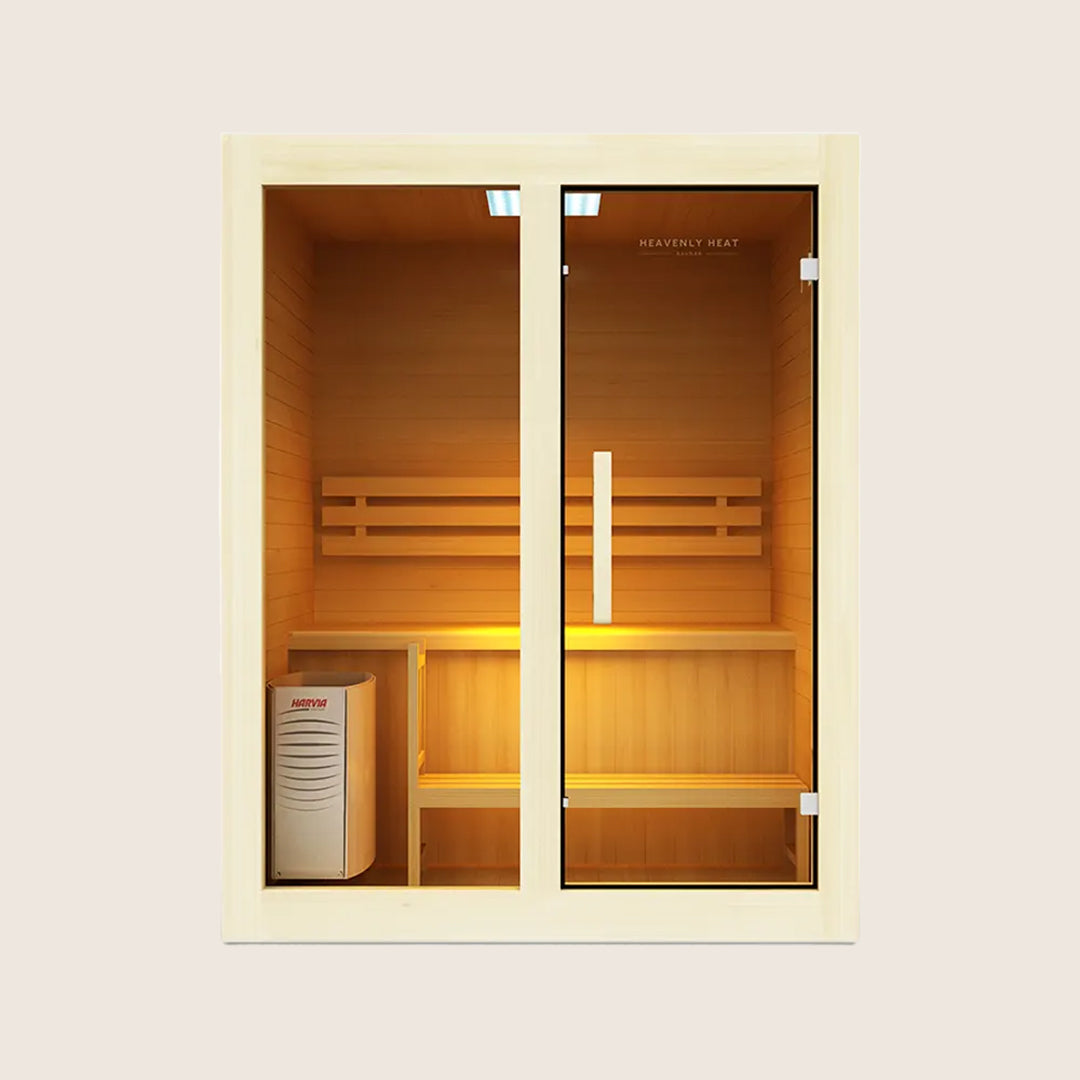What Are The Different Types of Sauna?

Saunas have been used for centuries to promote relaxation and improve overall health. Today, there are several different types of saunas available, each offering unique benefits. More people are now making their health a priority. According to the Life time 2025 Wellness Survey, 74.7% of people plan to focus on their well-being in 2025, which is nearly 20% more than in 2024.

Saunas play a key role in this movement, offering benefits that go beyond relaxation. Saunas improve circulation and help lower blood pressure, similar to moderate exercise, says Dr. Andrew Weil. Additionally, Dr. Jari Laukkanen's research suggests that frequent sauna use may reduce the risk of dementia and Alzheimer's disease, highlighting another powerful health benefit of regular sauna bathing. In this article, we will explore the traditional sauna, infrared sauna, and steam sauna, as well as the most popular sauna shapes. We will also provide tips on how to choose the best sauna type for your needs.
Traditional Sauna

Traditional saunas, also known as Finnish saunas, are the most commonly found saunas. These saunas use a heating element, typically a stove or heater, to generate heat. The heat is then transferred to the room through heated rocks or coals. Traditional saunas are known for their high temperatures, reaching upwards of 190°F (88°C).
Stepping into a traditional sauna is like entering a sanctuary of warmth and relaxation. The gentle hiss of steam as water is poured over the hot rocks creates a soothing ambiance that envelops you in comfort. The wooden benches inside the sauna offer a place to sit or recline, allowing you to fully unwind and let the heat melt away your stress.
Pros:
- The sauna provides intense heat, which promotes sweating and detoxification.
- Traditional saunas offer a warm and cozy ambiance, making them a popular choice for relaxation.
- Finland’s saunas connect to cultural identity, emphasizing wellness and community traditions over time.
Cons:
- It can take some time to heat up, usually requiring about 30 minutes to reach the desired temperature
- The high temperatures may not be suitable for everyone, especially those with certain medical conditions or sensitivity to heat.
- People who like milder heat might find traditional saunas with intense temperatures overwhelming.
Price Range:
A high-quality traditional sauna costs between $2,000 and $10,000. The price varies based on size, wood type, and heating system. Larger saunas or those made from premium woods like cedar cost more. Additional expenses include installation, maintenance, and electricity, which should be considered when budgeting.
Infrared Sauna
Infrared saunas utilize infrared heaters to emit infrared light, which is absorbed directly by the body. Unlike traditional saunas, infrared saunas do not heat the air around you but instead heat your body directly. The temperatures in infrared saunas typically range from 120°F to 150°F (49°C to 66°C).

Stepping into an infrared sauna is like basking in the gentle warmth of the sun, with the added benefit of targeted heat therapy. The infrared light waves penetrate deep into your body, promoting relaxation and rejuvenation from within. As the soothing heat envelops you, you may feel tension melting away and a sense of calm washing over you.
Infrared saunas are becoming more popular than ever. The infrared sauna market was worth $2.5 billion in 2023 and is expected to double, reaching $5.1 billion by 2031, growing at a strong rate of 7.3% per year. More people are turning to infrared saunas for their health benefits, ease of use, and lower operating temperatures, making them a top choice for home and wellness centers.
Additionally, infrared saunas can be especially beneficial for people with specific health concerns. For instance, a 2008 study showed that infrared sauna therapy helped reduce pain and stiffness in individuals with rheumatoid arthritis (RA) and ankylosing spondylitis (AS). This natural relief can be a great option for those struggling with these conditions, offering both comfort and therapeutic benefits.
Pros:
- Infrared saunas efficiently heat your body more than a traditional sauna.
- Infrared saunas penetrate the skin deeply, offering potential health benefits like pain relief and improved circulation.
- Infrared saunas aid respiratory health without the intense humidity found in traditional saunas.
Cons:
- Infrared saunas may not suit those who love intense heat.
- Infrared saunas can’t fit many people at once, limiting enjoyment.
Price Range:
The cost of an infrared sauna varies depending on factors such as size, materials, and additional features. On average, you can expect to pay between $1,000 and $6,000 for a high-quality infrared sauna.
Steam Sauna
Steam saunas, also known as steam rooms or Turkish baths, produce moist heat generated by a steam generator. Unlike traditional and infrared saunas, steam saunas have a lower temperature around 110°F (43°C) but a higher humidity level.
Stepping into a steam sauna is like entering a sanctuary of relaxation and rejuvenation. The warm, enveloping steam gently opens up your pores, allowing impurities to be flushed out, leaving your skin feeling refreshed and revitalized. The soothing atmosphere of a steam sauna can transport you to a state of tranquility, melting away the stresses of the day.
Pros:
- Steam saunas offer a spa-like experience, moisturizing and cleansing the skin effectively.
- Moist heat in saunas aids respiratory issues like congestion and allergies.
- Steam saunas are typically more affordable and quicker to heat up than traditional saunas.
Cons:
- The high humidity can sometimes feel overwhelming for some individuals
- Steam saunas require regular maintenance, which can be time-consuming and costly.
Price Range:
The cost of a steam sauna can vary depending on factors such as size, materials, and additional features. On average, you can expect to spend between $2,000 and $8,000 for a high-quality steam sauna.

Which type of sauna is best for detoxification?
Detoxification is the process of eliminating toxins from your body, which helps improve your overall health and energy levels. It offers many benefits, such as reducing inflammation, purifying your blood, aiding in weight loss, improving sleep, and boosting circulation. For effective detoxification, infrared saunas are the best choice. Unlike traditional saunas, infrared saunas use heat that penetrates deeper into your skin, allowing your body to sweat out more toxins. This deeper sweat effectively removes heavy metals and other impurities, leaving you feeling refreshed and revitalized.
What are the Most Popular Sauna Shapes?
When it comes to sauna designs, there are several popular shapes to consider. One of the most common shapes is the rectangular sauna, which offers ample space and flexibility in terms of seating arrangements. Another popular shape is the barrel sauna, known for its unique aesthetics and efficient heat distribution. Finally, the corner sauna is a great option for optimizing space in smaller areas.

What is a barrel sauna?
A barrel sauna is a sauna shaped like a large wooden barrel, designed for relaxation and better heat circulation. The rounded shape helps the heat spread evenly inside and warms up the space faster, so you can enjoy a cozy sauna experience. These saunas are usually made from durable woods like cedar or spruce, which smell great and can handle outdoor weather. Because of their compact and stylish design, barrel saunas are perfect for backyards or gardens, making them a great choice for outdoor use.
How to Choose the Best Sauna Type for Your Needs?
Choosing the best sauna type for your needs requires careful consideration of several factors. Firstly, think about the desired temperature and humidity levels you prefer. If you enjoy intense heat, a traditional sauna might be the best choice. If you prefer lower temperatures and more focused heat, an infrared sauna could be the right fit. Additionally, consider the available space, budget, and any specific health concerns or preferences you have.
Are portable saunas effective?
Portable saunas offer key benefits over traditional ones. They are easy to set up, move, and store, making them perfect for those with limited space or who prefer flexibility. Unlike permanent saunas, they don’t require expensive installation, and you can enjoy the same detoxifying and relaxation benefits at home, anytime.
Which sauna type is the hottest?
Saunas are hot because they use heat to relax muscles and improve circulation. The heat can come from wood, electric heaters, or even infrared light, depending on the type of sauna. The hottest saunas are usually the Finnish saunas, which reach temperatures up to 195°F (90°C). This matters because the higher heat can provide a deeper detox and a more intense, relaxing experience. For those looking for the ultimate heat, Finnish saunas deliver the most powerful heat therapy, offering a unique benefit.
Conclusion
In conclusion, the different types of saunas offer various benefits and experiences. Whether you prefer the intense heat of a traditional sauna, the gentle warmth of an infrared sauna, or the moisturizing steam of a steam sauna, there is a sauna type for everyone. Consider your preferences, budget, and space availability when selecting a sauna that will enhance your relaxation and well-being. So, go ahead and indulge in the therapeutic benefits of your very own sauna!
FAQs
What type of sauna is easiest to operate?
When it comes to ease of operation, infrared saunas are generally the easiest to use. Unlike traditional saunas that require preheating and monitoring the temperature, infrared saunas heat up quickly with a simple power button. Some models even offer programmable settings, allowing you to customize your sauna experience with ease.
What type of sauna is the cheapest?
In terms of affordability, steam saunas are often the cheapest option. Their simpler design and lower operating temperatures contribute to a lower price range compared to traditional and infrared saunas. However, it’s important to factor in the long-term costs of maintenance, energy consumption, and any additional features or upgrades you may desire.
What type of wood is best for a sauna?
When it comes to choosing the best wood for a sauna, it’s important to consider both aesthetics and functionality. The most commonly used woods for saunas include cedar, hemlock, and spruce. Cedar is highly regarded for its natural resistance to moisture, decay, and insects. Hemlock offers a clean and modern look while providing excellent heat insulation. Spruce is a cost-effective option with a light color appearance. Ultimately, the choice of wood depends on your personal preferences, budget, and desired sauna experience.
What type of sauna is best for home?
Choosing the best sauna for your home depends on various factors, including available space, budget, and personal preferences. If you have limited space or prefer a more portable option, an infrared sauna could be a good choice. If you have ample space and desire a traditional sauna experience, a traditional sauna or steam sauna might be more suitable. Consider your specific needs and consult with a sauna specialist to determine the best type of sauna for your home.



